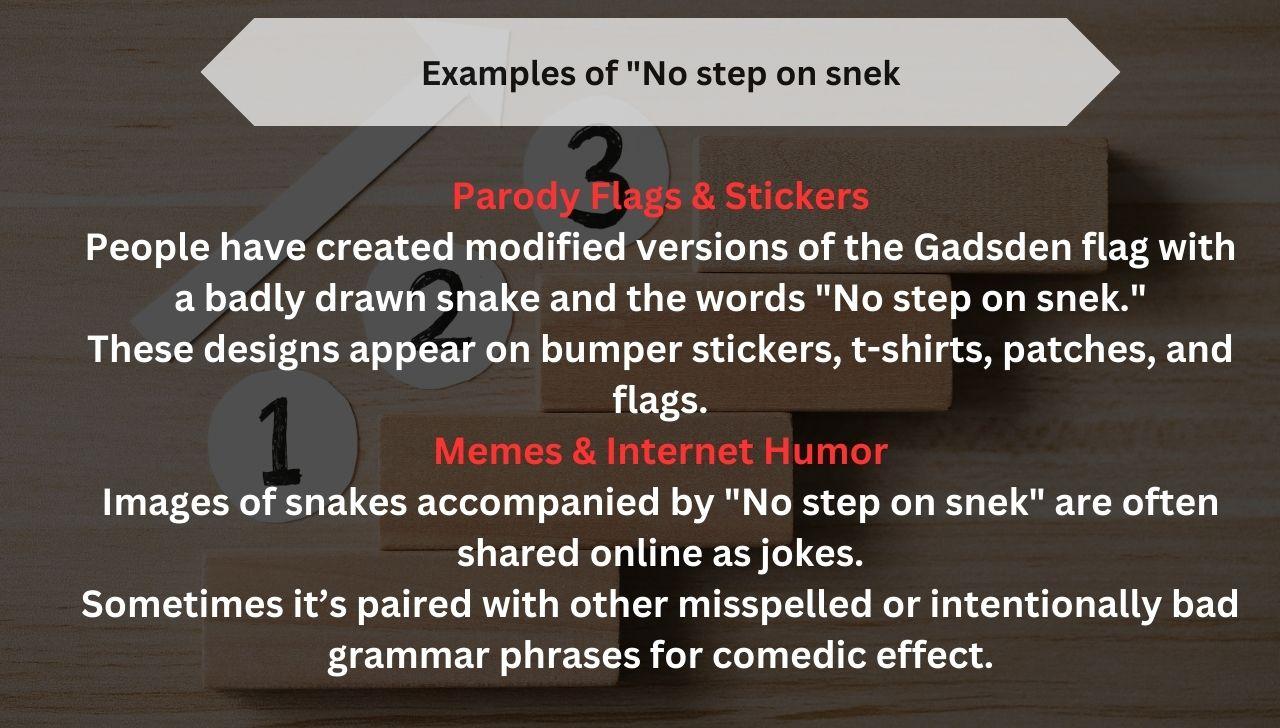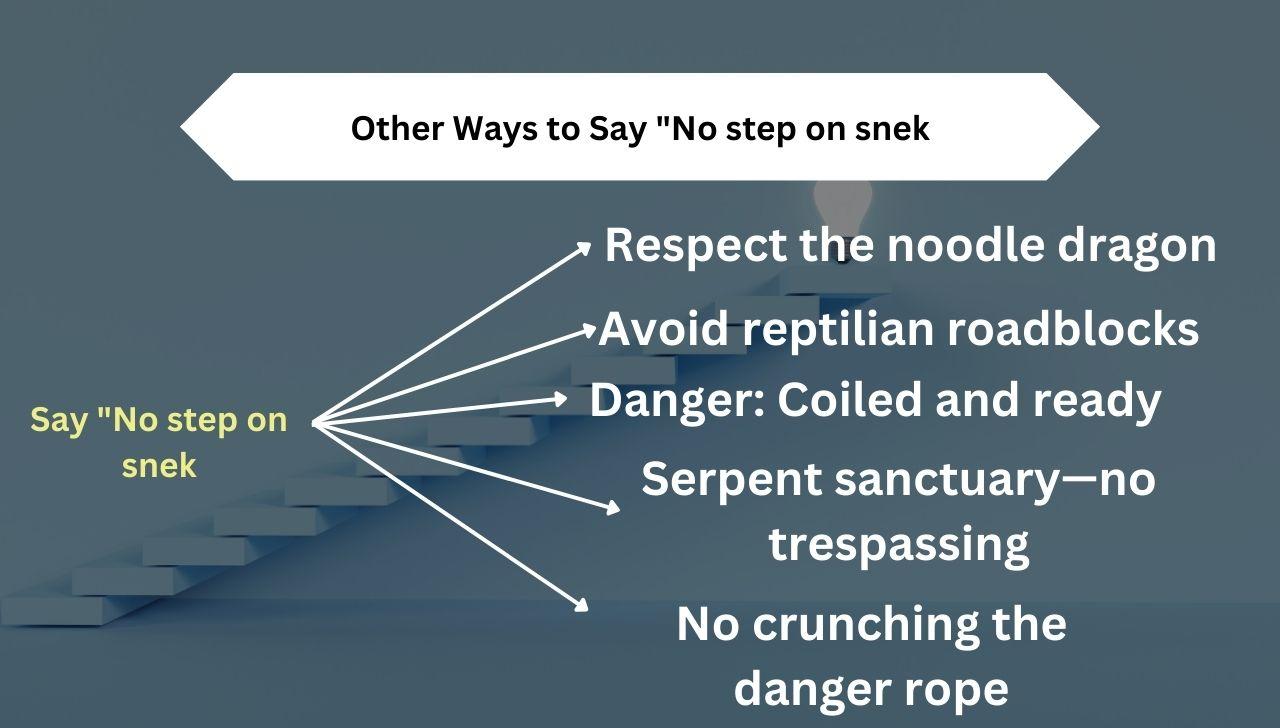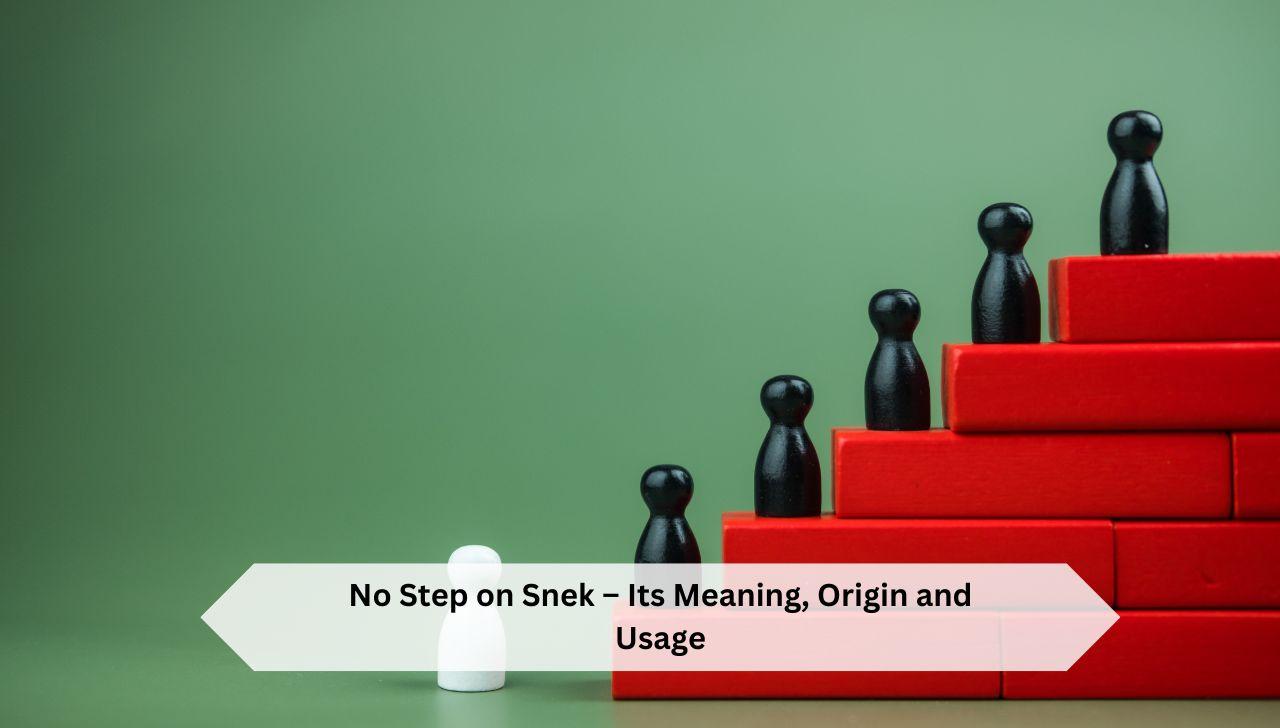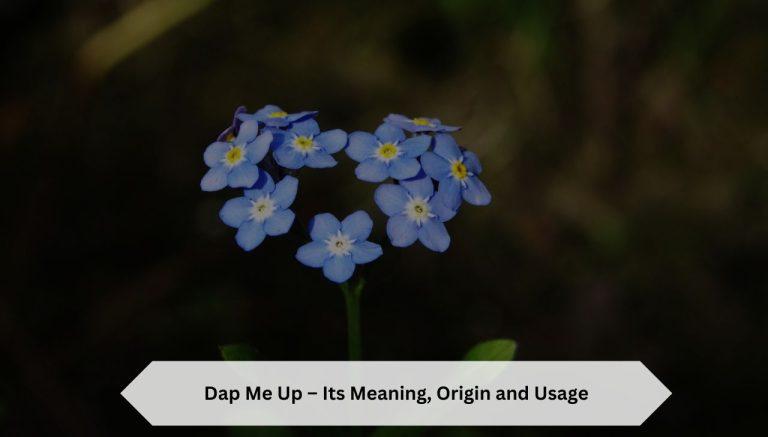No Step on Snek – Its Meaning, Origin and Usage
The Meaning of “No step on snek
The phrase “No step on snek” is a fun twist on the old slogan “Don’t Tread on Me” from the Gadsden Flag, known for its stand against oppression. This new version, often shown with a simple, cartoon-like snake, uses humor and a sense of internet style to make its point. While the original phrase was a stern warning against tyranny, the modern version is more about making people laugh and pointing out absurdities. Since 2016, “No step on snek” has become popular, especially among right-wing groups. They use it lightly to talk about personal freedom and resisting too much government control.
But it’s not just a political statement. It’s also a popular internet meme that pokes fun at oversimplifying significant issues. This shows how the phrase can change its meaning depending on where and how it’s used. In short, “No step on snek” mixes a historical protest against authority with today’s internet humor and cultural commentary. It’s a good example of how old ideas can be reshaped for modern times and different contexts.

Examples of “No step on snek
The phrase ‘No step on snek’ pops up in politics and daily talk, serving different roles. In politics, groups like the Oath Keepers use it to show they’re against government interference. This echoes the old Gadsden Flag, all about resisting and valuing freedom.
- Parody Flags & Stickers
- People have created modified versions of the Gadsden flag with a badly drawn snake and the words “No step on snek.”
- These designs appear on bumper stickers, t-shirts, patches, and flags.
- Memes & Internet Humor
- Images of snakes accompanied by “No step on snek” are often shared online as jokes.
- Sometimes it’s paired with other misspelled or intentionally bad grammar phrases for comedic effect.
- Video Games & Pop Culture References
- Call of Duty: Modern Warfare (2019) featured a weapon charm named “No Step on Snek.”
- Various military or survival-themed games reference the phrase, either as easter eggs or customization options.
- Military & Tactical Gear
- Some soldiers, airsoft players, or gun enthusiasts use patches or gear with “No Step on Snek” as a humorous take on military insignia.
- Political & Satirical Use
- Some use it to poke fun at libertarian or anti-government sentiments, exaggerating the original message into something absurd.
In everyday life, people use it when they’re annoyed or uncomfortable. Saying, “No step on snek, please!” is a way to tell someone they’re being too pushy. Online, it’s even more popular. It’s a fun, firm way to mark personal boundaries. Republicans, in particular, like using it to lightly state their views or claim their space.

Also Read:- Soda Tab – Its Meaning, Origin and Usage
Other Ways to Say “No step on snek
The phrase “No step on snek” has taken on a life of its own. It’s a playful take on warning signs, blending humor with a serious message. But why stop there? If you want to mix things up, here are alternative ways to express the same idea. Whether you aim for wit, exaggeration, or just a fresh take, these variations keep the message clear—leave the snek alone.
- Respect the noodle dragon
- Avoid reptilian roadblocks
- Danger: Coiled and ready
- Serpent sanctuary—no trespassing
- No crunching the danger rope
- Tread carefully, fanged friend ahead
- Reptile rights matter
- Unauthorized snek stomping prohibited
- Do not disturb the danger noodle
- This is a no-squish zone
- Venom delivery system ahead—watch your step
- Beware: Slippy rope with bite
- Snakes were here first—move along
- Keep boots off the boop noodle
- Hiss-terically bad idea to step here
- No snek compression allowed
- Walk softly—fanged guardian ahead
- Think twice before you snek-step
- Careful! Slither speed bump ahead
- Don’t tread on the spicy shoelace
- Feet off the flexi lizard
- Danger: Hiss incoming
- Sssstep back, please
- Slither zone—stay out
- Snake crossing—yield required
- Forbidden to squish the slink
- Warning: Snek patrol in effect
- Slippy spaghetti says no
- Coil ahead—adjust path
- You step, you regret
For times when you need to sound more serious, you could go with “Don’t tempt the tiger” or “I’m warning you.” These phrases suggest there could be trouble if someone doesn’t back off, like a rattlesnake getting ready to strike.
Each way of saying this fits different situations. “Don’t Tread On Me” works well when talking in a more formal or historical setting. “Leave me alone” is perfect for everyday, casual use. And “Don’t tempt the tiger” is excellent when you need to raise the stakes. But at the end of the day, they all mean the same thing: I need my space and want to be left alone.
Origins of “No step on snek
The phrase “No step on snek” might seem odd, but it comes from a profound historical symbol of resistance and freedom. It’s a funny twist on the “Don’t Tread on Me” motto from the old Gadsden Flag, created during the American Revolution. Initially, this flag showed a rattlesnake and was used to show defiance against British control. The colonists chose the rattlesnake because it represented strength, defiance, and resilience—qualities they saw in themselves.
This modern version, “No step on snek,” popped up on the internet around 2015 as a meme. It shows a simple, cartoonish snake, giving a light-hearted and sarcastic nod to the original Gadsden Flag.
This meme caught on during the 2016 U.S. presidential campaign and was used by different political groups. While it keeps that rebellious spirit, it’s often used today to poke fun at political or ideological opponents by simplifying the old message to something almost childish. This makes it handy and popular for online chats, serving as a protest symbol and a way to make a point with humor.
Conclusion
In short, “No step on snek” is a new take on an old idea: stand up for yourself and don’t let others push you around. It’s interesting to see how words and symbols change in politics and society over time. What started as a fun meme has grown to express a clear message: respect my space. This reflects a broader belief in society today about the importance of personal rights and boundaries.
It’s like the phrase has taken on a life of its own, moving from just a joke online to something people use to say something meaningful about how they want to be treated. It shows how even the simplest things can become pretty powerful in how we talk about and understand our rights today.







